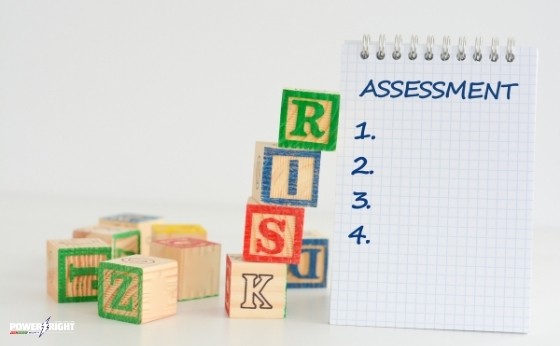
Fire safety is vital for every workplace and property. Appropriate safety measures guarantee that in the case of a fire, injuries to occupants and damage to property is minimal or avoided altogether.
Fire Risk Assessments are requirements that have to be carried out according to the Safety, Health & Welfare at Work Act 2005. Fire safety audit procedures are to be conducted by occupiers of all commercial premises. These requirements need to take into account fire and explosion hazards.
It is necessary to do some preliminary research prior to completing the fire risk assessment. This work consists of gathering information before conducting a walkabout of the property. At this point, you can find and study the following aspects of the building in question:
Moreover, you have to know some specific information about the building:
Remember to review the following aspects of fire safety at work:
The following guide should be reviewed before and after the walkabout. Paying attention to these areas is crucial when conducting the fire safety audit. The information presented relates to Irish standards and requirements.
Define the approximate number of employees, visitors, contractors, and members of the public:
Make sure reasonable measures have been taken to avoid fires as a result of smoking. Adequate policies should be present for those who wish to smoke.
Make certain that all the necessary measures have been taken to prevent fires from electrical sources:
The usage of portable heaters and fan heaters should be minimized or avoided.
It is crucial to keep these areas free of clutter to prevent overheating and avoid blocking vents.
Check that necessary measures have been taken to prevent fires as a result of cooking. The following actions should be in place:
The building has to have an adequate lightning system in place, tested and inspected regularly.
Define who controls the roof work and what equipment is there. Make sure there are some fire safety rules and procedures imposed on outside contractors. There should be satisfactory control and suitable precautions taken during hot work, including hot work permits.
There should be a procedure to control the purchase, storage and use of potentially flammable (and just dangerous) substances. Check if it contains risk assessments and if they have been carried out.
All the flammable substances need to be identified and stored in appropriate facilities, such as flameproof cabinets. Examine if any substances may act as sources of oxygen, for example, fireworks or peroxides). Review the procedures for disposal of obsolete chemicals and inventory management.
Make sure the building is secured against intruders and arson by outsiders.
Review the standard of housekeeping. There should be fire escape routes, exits and equipment in place. The combustible materials must be separated from ignition sources.
You can learn a lot from previous fire incidents as such events can highlight hazards so that you can initiate corrective actions.
Check if there are any openings in compartment doors, walls, floors or protected areas, such as corridor or stairs. Avoid using materials that can promote fire spread.
Inspect fire doors and make sure there are no openings in the doors from alterations, they shut completely and inspected regularly.
There should be fire detection and alarm system in place with automatic fire detection appropriate for occupancy and fire risk. Check if the location of the panel and repeater panel is appropriate.
Identify the procedures to alert people to fire and if there are manual call points available. Sounders or alternative alarms must take into account all people at risk and serve all the areas. Check if there are suitable fire extinguishers, hose reels, fire blankets provided.
The building has to feature reasonable means of escape in case of fire: a minimum of 2 exits per floor, unobstructed escape routes, free from locked doors and reasonable distances of travel to a designated safe place.
Provide the building with emergency escape lighting on escape routes, open areas and other high-risk areas. There should be signage in place for escape routes, doorways, exits and stairs.
All staff have to go through fire safety training and periodic refresher training at suitable intervals. This instruction has to address the following: special fire risks, action on hearing the fire alarm, action in the event of fire or discovery of fire etc.
Moreover, the organization should provide fire safety drills at appropriate intervals (minimum 2 per year) and keep a record.
Occupier has to arrange the inspection and testing of fire equipment and systems. Additionally, a competent person has to regularly test and maintain fire equipment and systems.
Organizations are responsible for fire safety. Needless to say, that failure to consider or address fire risks are dangerous. There can be drastic damages, including severe damage to commercial property and loss of life. The Safety, Health & Welfare at Work Act 2005 regulations state that employers must assess risks, identify hazards, and hold a written risk assessment.
If there have been no steps taken for fire safety, it becomes obvious in the event of a fire. In such a case, the employer will risk large fines and potential jail time. This simple fire safety audit guide will help you identify the weak points and correct them before it is too late.